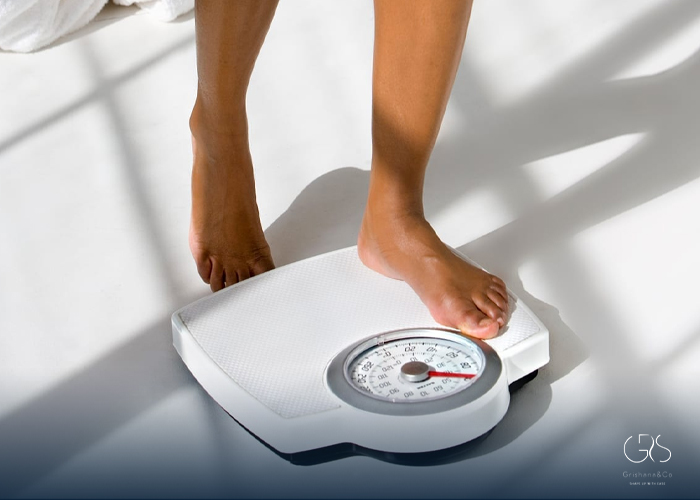Average weight for women is more than just a personal concern—it’s a vital public health indicator. Understanding what qualifies as a healthy or average weight for women helps individuals evaluate health risks, set achievable fitness goals, and monitor overall well-being. However, this number isn’t universal; it varies significantly based on factors like height, age, genetics, lifestyle, and ethnicity. This article breaks down how age and height influence the average weight for women and how these factors relate to broader health tools like BMI and body composition analysis.
Why Understanding Average Weight for Women Matters
Average weight can offer insight into population health trends, but it’s not inherently a measure of health or beauty. Instead, it provides a reference point to evaluate:
- Health risks associated with underweight or overweight conditions
- Nutritional status and metabolic function
- Public health trends across different age groups and regions
- Fitness goals in context, rather than in isolation
Medical professionals use average weight data to screen for potential issues like malnutrition, obesity, or hormonal imbalance, especially when combined with other markers like BMI, waist circumference, and body fat percentage.
Height and Its Influence on Weight
Height is a key factor in determining average weight. Taller women naturally tend to weigh more because they have larger bones, more tissue mass, and greater muscle distribution. Conversely, shorter women usually weigh less.
To illustrate this without using a table, consider the following guidelines based on general health recommendations from the World Health Organization (WHO) and Centers for Disease Control and Prevention (CDC):
- A woman who is 5 feet (152 cm) tall may have an average weight around 100 to 125 pounds (45 to 57 kg).
- A woman who is 5 feet 5 inches (165 cm) may have an average weight between 120 and 150 pounds (54 to 68 kg).
- A woman who is 5 feet 10 inches (178 cm) may have an average weight between 145 and 175 pounds (66 to 79 kg).
These ranges vary due to factors such as muscle mass, bone density, and fat distribution. For example, a woman with more lean muscle mass may weigh more than average but still be metabolically healthy.

Age and Weight: The Natural Progression
Age also plays a significant role in a woman’s average weight. Metabolism, hormone levels, and body composition change over time, often leading to fluctuations in weight throughout life stages.
1. Adolescence (12–19 years)
During puberty, girls experience significant physical changes, including weight gain from the development of breast tissue, reproductive organs, and increased fat stores. Hormonal surges cause the body to prepare for adulthood. By the late teenage years, girls typically stabilize into their adult height and body structure. The average weight for girls in this age range tends to fall between 100 and 130 pounds (45 to 59 kg), depending heavily on height and genetics.
2. Young Adulthood (20–29 years)
In their 20s, most women have reached physical maturity. At this point, weight stabilizes for many individuals unless influenced by lifestyle choices like exercise, diet, or pregnancy. The average weight during this stage may range from 115 to 160 pounds (52 to 73 kg), again depending on height and genetic factors.
This stage is also when many women experience their first notable weight gain due to metabolic slowdown, sedentary lifestyles, or changes in diet.
3. Early Middle Age (30–39 years)
As women move into their 30s, they may begin to see gradual weight gain. Muscle mass tends to decrease while fat mass increases, especially if physical activity levels drop. Hormonal shifts related to childbearing or birth control can also influence weight.
It’s common for women in this age group to gain 1 to 2 pounds (0.5 to 1 kg) per year. Therefore, a woman in her mid-30s may weigh 5 to 10 pounds (2 to 5 kg) more than she did in her early 20s, even without a significant change in lifestyle.
4. Midlife (40–59 years)
This stage is often characterized by more noticeable metabolic slowdown, beginning signs of menopause, and redistribution of body fat—especially around the abdomen. It becomes more challenging to maintain weight, even with a similar diet and activity level.
Studies show that women in their 40s and 50s tend to gain about 10 to 15 pounds (4.5 to 7 kg) over a decade. This means the average weight for women in this age group might range between 130 to 170 pounds (59 to 77 kg), depending on height.
5. Senior Years (60 and beyond)
After age 60, body composition shifts again. Muscle mass continues to decline (a condition known as sarcopenia), which may lead to reduced overall weight, but a higher body fat percentage. Some women gain weight due to decreased mobility, while others lose weight due to appetite loss, illness, or medication side effects.
The average weight among elderly women typically falls within 125 to 165 pounds (57 to 75 kg), with notable variation depending on health status and lifestyle.
BMI: Useful, But Limited
Body Mass Index (BMI) is commonly used to categorize weight relative to height. A BMI between 18.5 and 24.9 is generally considered healthy. However, BMI has limitations:
- It does not distinguish between fat and muscle. A muscular woman could have a BMI that suggests she is overweight, despite being healthy.
- It overlooks fat distribution. Abdominal fat (visceral fat) poses greater health risks than fat stored in hips or thighs, yet BMI doesn’t account for this.
- It doesn’t consider age or ethnicity. Older women tend to have more body fat than younger women at the same BMI, and ethnic differences in fat distribution affect health outcomes.
Despite these flaws, BMI remains a quick screening tool. Still, it should be paired with other measurements for a more complete picture.
Waist Circumference and Waist-to-Height Ratio
A more nuanced way to evaluate healthy weight is by examining waist circumference or waist-to-height ratio (WHtR).
- A waist circumference over 35 inches (88 cm) in women is associated with higher risks of heart disease, type 2 diabetes, and metabolic syndrome.
- A waist-to-height ratio above 0.5 (waist divided by height) may indicate excess abdominal fat, which is more metabolically harmful.
These indicators are particularly important for assessing health risks not apparent in BMI values alone.
Body Composition: Beyond the Scale
Rather than fixating on average weight, many health professionals recommend assessing body composition—the ratio of fat to lean mass.
- Lean body mass includes muscle, bone, and organs.
- Fat mass includes essential fat (needed for hormonal and organ function) and storage fat.
Two women can weigh the same and have the same BMI, yet have completely different health profiles if one has more lean mass and less fat than the other. This is why methods like DEXA scans, bioelectrical impedance analysis, and skin caliper measurements are increasingly used in wellness and fitness centers to determine fat percentage.
Influencing Factors: Genes, Lifestyle, and Hormones
A woman’s average weight is influenced by a blend of non-modifiable and modifiable factors:
- Genetics: Inherited body type, metabolism, and fat distribution patterns.
- Hormones: Fluctuations in estrogen, cortisol, and thyroid hormones can trigger weight changes, especially during puberty, pregnancy, menopause, or stress.(If you’re interested in reading about cortisol belly causes)
- Lifestyle: Diet, physical activity, sleep, and stress levels play major roles.
- Sociocultural factors: Socioeconomic status, cultural attitudes toward weight, and access to healthy foods affect weight outcomes significantly.
Rather than comparing oneself to statistical averages, a better question to ask is: What is a healthy weight for me, based on my height, age, and lifestyle?
A healthy weight is one where:
- Energy levels are stable.
- Blood markers (cholesterol, glucose, etc.) are within healthy ranges.
- Menstrual and hormonal functions are regular (for premenopausal women).
- The individual feels confident and physically functional.
If you’re unsure about your optimal weight, consider speaking with a healthcare provider, registered dietitian, or personal trainer. They can help you assess body composition, fitness levels, and overall health more accurately.

Tips for Maintaining a Healthy Weight
- Eat mindfully: Focus on whole foods rich in fiber, protein, and healthy fats. Avoid excessive processed foods and sugars.(If you’re interested in reading about unprocessed foods benefits)
- Stay active: Combine cardio, strength training, and flexibility exercises.
- Prioritize sleep: Poor sleep affects hunger-regulating hormones and fat storage.
- Manage stress: Chronic stress increases cortisol, which is linked to abdominal fat.
- Stay hydrated: Water helps regulate metabolism and supports digestion.
- Regular checkups: Monitor changes in blood pressure, weight, and blood sugar.
Conclusion
Average weight for women is a dynamic measure influenced by both biological and environmental factors. While knowing national or global averages can provide a general context, personal health is far more nuanced. By considering height, age, body composition, and lifestyle, women can better understand what weight range supports their unique health and well-being.
Rather than chasing a number on the scale, aim for balanced nutrition, consistent physical activity, and sustainable habits that promote long-term wellness.
Sources
- Centers for Disease Control and Prevention (CDC), Adult BMI Calculator
- World Health Organization (WHO), Body mass index (BMI)
- Harvard T.H. Chan School of Public Health, Obesity
- National Institutes of Health (NIH), Assessing Your Weight and Health Risk










